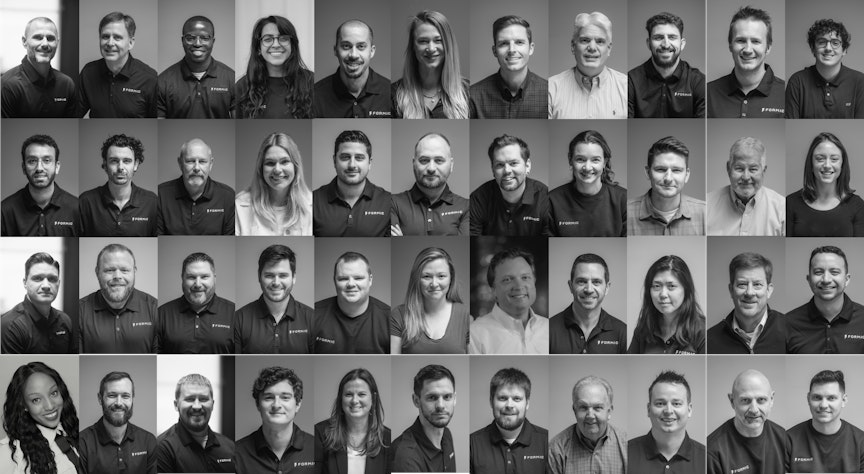Two years into the COVID-19 pandemic, metal fabrication has been the talk of the town, with stories varying from record high steel prices to monstrous shipping delays and the labor gap. Unfortunately, we’re now entering into another trade crisis during these trying times with Russia. The metal fabrication industry will be affected, but there are some growing trends that may help the industry recover faster.
Manufacturing is returning to American shores
There are growing efforts to reshore American manufacturing. Several large corporations have made commitments to make this move: General Motors is expanding their electric and battery production in Michigan and Samsung is building a $17 billion dollar chip plant in Texas. “Two in three (69%) manufacturing companies are looking into bringing production to North America (compared to 54% in February),” according to the Alliance for American Manufacturing. This will all be a test to see if the U.S. can regain some manufacturing power, bringing U.S. made products back to the forefront.
Reshoring means production is closer to buyers and doesn’t depend on the long and costly wait for transportation of goods across oceans. Remember the logjam in the Californian ports in 2021? Issues with the long lines for unloading of container ships caused major delays ahead of the holidays.
Returning to American shores would mean, as the New York Times words it, “repositioning the supply chain.” Benefits include shortening supply chains, more reasonable lead times, avoiding issues with closed borders, idle shipments, and vastly reduced shipping costs.
Reshoring will not happen overnight, but manufacturers looking to increase their domestic production capacity can start by establishing more relationships with domestic suppliers and investing in smart manufacturing.
Industrial automation is more accessible with Robotics-as-a-Service
Benefits of Industrial automation are already well documented in metal fabrication settings and often include improved efficiency and consistency. AGVs, laser welding cells, machine tending applications, and many others are making an impact in the industry, especially in cases where it has been difficult to find employees to fill these traditionally repetitive and dangerous roles. We are witnessing a huge labor gap with 4.6 million manufacturing jobs predicted to be unfilled by 2028, making industrial automation a necessary solution.
Still, many facilities have yet to implement their very first automation solution. The initial cost of purchase and risk of investment is often the main barrier preventing manufacturers from taking advantage of new technologies. Therefore, companies like Formic are offering RaaS to create a space for users to rent solutions, vastly reducing upfront costs so users can realize the gains much faster.
With industrial automation a viable option for manufacturers of all sizes, closing the labor gap is no longer an impossible feat.
Augmented reality training is reducing human error
Augmented reality is not just for entertainment anymore. Traditionally, steel fabricators would use a combination of 3D modeling (a.k.a. BIM Modeling) and actual 2D prints of shop drawings to get each piece correct. Now with augmented reality goggles, a worker can have the models right in front of their eyes, a digital replica, overlaid onto the project they are working on to align and check they have the correct configuration as they go without having to continually consult a piece of paper or computer screen. This saves a vast amount of time and reduces errors made during fabrication.
PTC, the leading IIoT platform, along with the Materials Processing Institute, believes that such augmentation will help them move toward their goal of a net-zero steelworks by 2050 as the “successful implantation… has the potential to save tens of millions every year,” explained Chris Oswin, Group Manager at the Materials Processing institute.
Predictive AI technology is making manufacturing more efficient
One of the hottest areas of technology is the development of predictive analytics which improves the ability to forecast possible errors and inconsistencies using statistical algorithms. For metal fabrication manufacturers, this type of technology can help with:
- Optimizing inventory management
- Reducing fabrication errors
- Cutting down delivery times
- More accurate data collection
- Identifying waste
- Finding new solutions
All improvements lead to a far more effective and efficient manufacturing process, which often leads to growth, more jobs, and happy customers. Thanks to predictive AI, forecasting no longer has to be dependent on historical data, especially during times like the COVID-19 pandemic when historical based modeling tends to fail.
Conclusion
The metal fabrication industry is on the rise in the United States, especially as the supply chains begin to stabilize and the demand for American made products increases. With growing technologies like robotics, augmented reality, and AI/ML, companies can increase their capacities at a much faster pace to ensure they maximize their market share and margins and overcome the challenges of international events.


